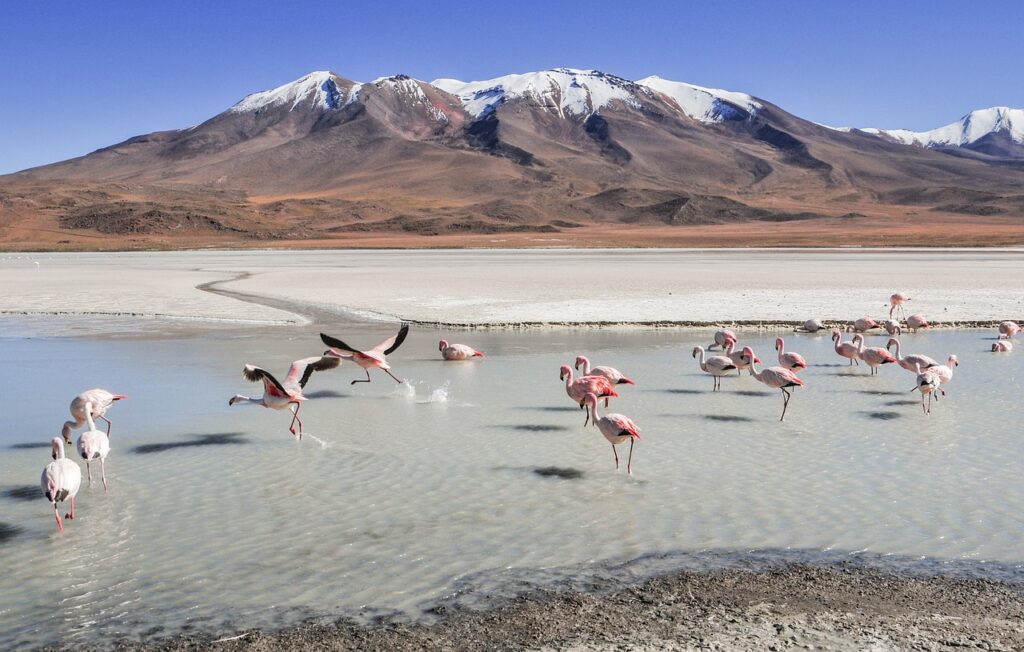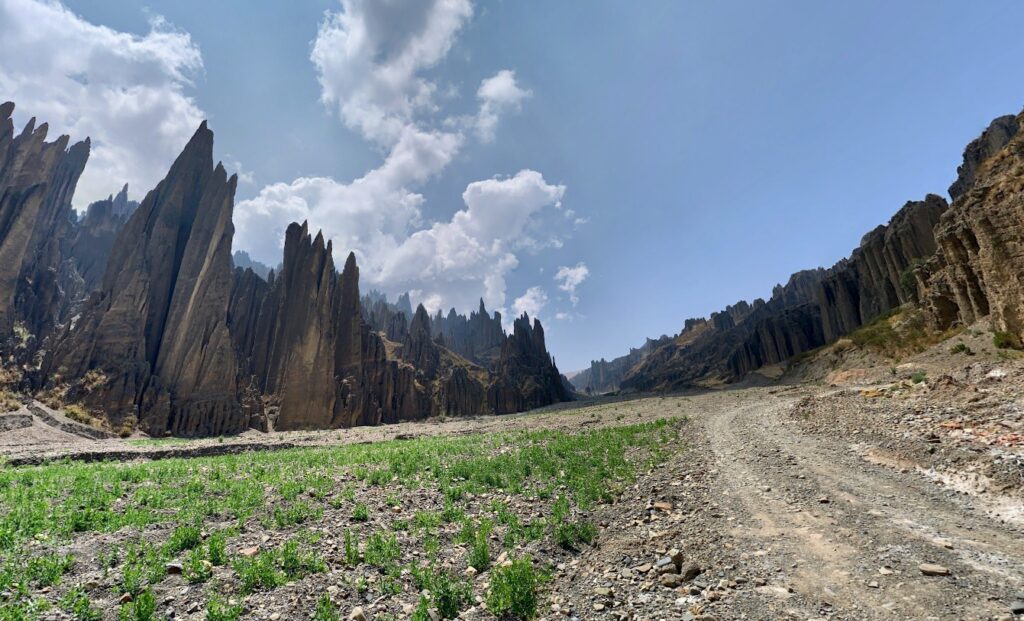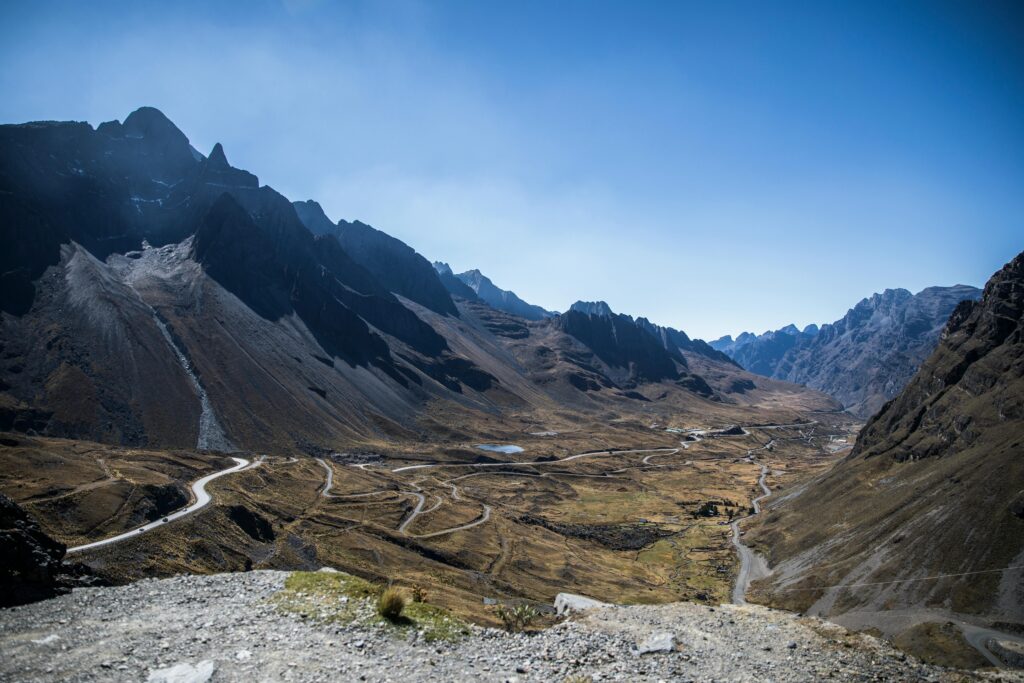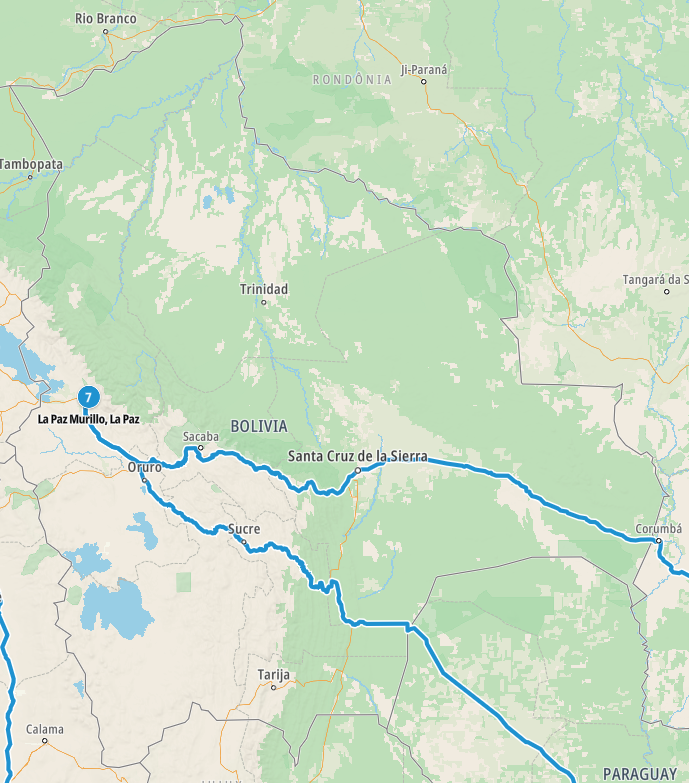Bolivia / Estado Plurinacional de Bolivia – Let’s explore here
What’s Bolivia like?
Bolivia is a landlocked country in South America, about twice the size of France. About one third of the country is within the mountainous Andes, whereas in the east the lowlands meet the Amazon Basin. Bolivia’s highest point is Nevado Sajama, in the west of the country, at 21,463 ft (6,542 m) above sea level, and its lowest point is 230 ft (70 m) along the Paraguay River.
The population of Bolivia is around 12 million people (2024), about 400,000 of whom live in the main capital, Sucre. By contrast, the most populous city, Santa Cruz de la Sierra, is home to around 3 million citizens. The seat of government is in the other capital, La Paz, the highest capital city in the world, at 11,942 ft (3, 640 m) above sea level. Bolivia has a relatively young population, with almost ⅓ of citizens being aged under 15 years.
Its independence from Spain was recognised in 1847. Its neighbours include Argentina, Brazil, Chile, Paraguay and Peru. It relies heavily on its gas and zinc reserves.


A bit about the history of Bolivia
Bolivia’s history is shaped by Indigenous civilisations, Spanish colonisation, and struggles for independence, followed by political turmoil and social change.
Indigenous culture
Before the arrival of the Spanish in the 16th century, Bolivia was home to several advanced Indigenous cultures, most notably the Tiwanaku civilization and the Inca Empire, which controlled much of the Andean region. The Incas built the largest pre-Columbian empire in the Americas, with its heart in modern-day Bolivia, particularly around the area of Lake Titicaca.
Spanish colonisation
In the early 1500s, SpanSpain – Let’s explore hereish conquistadors arrived, and Bolivia became part of the Spanish Viceroyalty of Peru. During the colonial period, the region became a major source of silver, particularly from the Potosí mines, which became one of the wealthiest and most significant mining centers in the world. The exploitation of Indigenous labor and resources played a central role in the colonial economy.
Struggle for independence
Bolivia’s struggle for independence began in the early 19th century, influenced by other Latin American independence movements. The country declared its independence from Spain on August 6, 1825, after years of fighting. The newly independent nation was named Bolivia in honor of Simón Bolívar, the leader of the South American independence movement. However, Bolivia’s early years were marked by political instability, territorial disputes with neighboring countries, and a series of military-led governments.
War
In the late 19th century, Bolivia suffered a significant blow in the War of the Pacific (1879–1884), losing valuable coastal territory to Chile and Peru. This loss left Bolivia landlocked, a status that continues to affect the country’s economy and geopolitics.
Revolution
The 20th century was marked by political and social unrest, including a series of military coups and revolutions. In 1952, Bolivia underwent a major transformation with the National Revolution, which led to the establishment of universal suffrage, the nationalisation of mines, and land reforms aimed at improving the lives of the rural Indigenous population.
Social change
In the following decades, Bolivia experienced alternating periods of military dictatorship and democratic governance. The country faced economic challenges, including hyperinflation and poverty, and struggled with political polarisation. In the early 21st century, Bolivia saw significant social changes under the leadership of Evo Morales, who became the country’s first Indigenous president in 2006. Morales’s government focused on social programs, poverty reduction, and the nationalization of key industries, particularly natural gas and oil.
Morales was re-elected multiple times, but his tenure ended in 2019 following protests and allegations of electoral fraud. The political crisis led to his resignation and the establishment of a temporary government. In 2020, Bolivia held new elections, and Luis Arce of Morales’s political party, the Movement for Socialism (MAS), won the presidency, signaling a return to stability.
Today, Bolivia remains a democratic republic, facing challenges such as poverty, inequality, and political divisions, but continues to be an important player in the Andean region with a rich Indigenous heritage and cultural identity.


Bolivia road trip
Our Bolivian road trip is part of a much larger South American road trip.
Map our road trip through Bolivia

Our current planned road trip through Bolivia takes us from Paraguay towards the capital, La Paz, before heading on to Brazil.
No doubt this Pan-South American route will change once we reach Bolivia, so that we can explore the country in more depth.
Hopefully our journey will improve our knowledge of this intriguing and beautiful country, and enable us to meet some interesting people. We’ll be updating this page at that time – don’t forget to check back
What’s it like to drive in Bolivia?
They drive on the right hand side of the road in Bolivia, except in the province of Yungas, where they drive on the left hand side of the road!! This is because of the extremely dangerous cliffside roads throughout the Yungas region – driving on the left enables the driver to see (and hopefully safely traverse) the crumbling edges of the deathly falls!! Road conditions throughout the country are poor, as are driving standards. Many roads are at altitude.
Do you require an international driving permit in Bolivia?
We’ve created a dedicated page to driving abroad, which answers this question, and more, which you might find helpful.
Can you use your UK driving license when driving through Bolivia?
We’ve created a dedicated page to driving abroad, which answers this question, and more, which you might find helpful.
Do I need a carnet de passages to drive in Bolivia?
We’ve created a dedicated page to driving abroad, which answers this question, and more, which you might find helpful.
What currency do they use in Bolivia?
In Bolivia they use the Boliviano. Cash is widely used. The use of credit / debit cards is widely accepted. Travellers cheques are accepted in major cities. There are many ATMs in cities, although not all accept foreign issued cards.
You should make yourself aware of the amount that your bank charges you for using credit and debit cards abroad. Often credit cards are cheaper for purchasing items directly, and for withdrawing cash from ATMs.
What language do they speak in Bolivia?
They speak Castilian in Bolivia. Although many also speak Aymara and Quechuan. English is not widely spoken outside of major cities.
What time zone is Bolivia in?
Remember, when you’re planning your next trip to take a look at what time zone it’s in.
Do I need a visa to visit Bolivia?
We’ve created a dedicated, more comprehensive page on visas, which you should find helpful. Check it out!
Is wild camping legal in Bolivia?
Yes, wild camping is fine in Bolivia, although make sure the land is not private or used for cultivation of drugs.
What plug / socket type do they use in Bolivia?
In Bolivia they use plug / socket types A and .


Health issues in Bolivia
Is it safe to drink water in Bolivia?
No, it is not safe to drink tap water in Bolivia. Bottled water is readily available throughout the country.
What vaccinations are required for Bolivia?
This NHS website is kept up to date with all relevant information on vaccinations in Bolivia.
Phones in Bolivia
What is the country calling code for Bolivia?
The country calling code for Bolivia is +591
What are the emergency phone numbers in Bolivia?
- The emergency number for police in Bolivia is: 911 / 110
- In Bolivia, the emergency number for ambulance is: 911 / 118
- The emergency number for fire in Bolivia is: 911 / 119
If you’ve got some useful info that you’d like to share, let us know!
And don’t forget to check out all the other pictures!
